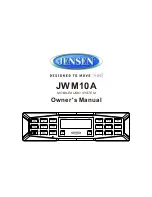
Beta Draft Confidential
Configuring PNNI Routing
PNNI Policy-based Routing
ATM Services Configuration Guide for CBX 3500, CBX 500, GX 550, and B-STDX 9000
1/19/05
21-31
Path selection is performed as follows:
•
All the resources of the PNNI routing domain that match the first policy in the
ordered list will be considered.
•
Path selection will be performed considering only resource partitions tagged with
Rp-NSC 30 and PNNI links tagged by Ne-NSC_20. If an acceptable path is
available (for instance A1-B1-C1-A2) then the call will be routed over that path
first. If no acceptable path can be found, then the path selection will consider all
the resources of the PNNI routing domain that match the second policy in the list.
In the example in
this would be the path from
A1-D1-A2.
•
Path selection is performed again by considering either resource partitions tagged
with Rp-NSC 30 and PNNI links tagged by Ne-NSC_20, or bare resources of
PNNI links tagged with Ne-NSC_public. No preference is given among the list of
Ne-NSCs.
The resulting path segment in this VNN domain would be A1 to D1 to A2. To follow
the path returned from the PNNI routing component, the call would be signaled in a
standard way in the PNNI network. The SETUP message carries the policy constraint
IE with the IE instruction field set to a proper value.
The call request process on node A2 (PNNI/VNN gateway) will proceed as follows:
•
At the PNNI/VNN Gateway, based on the policy constraint IE in the SETUP
message (and possibly pre-configured mapping information between Policy
Routing and Layer2 VPN), the policy constraint included is translated back to a
Layer 2 VPN information, such as VPN 10 circuit with Private Net Overflow set
to public.
•
Path selection is performed considering VNN trunks belonging to VPN 10 or
public VNN trunks. The preference must be given to the trunks belonging to the
VPN 10. The resulting path segment in this VNN domain: {A2, C2}
•
PNNI standard SETUP message is converted to CALL PDU and is forwarded
towards destination in the normal manner.
A link fully tagged with Rp-NSC, such as A1-B1-C1-A2 in
will not be used by any circuit not bound by these policy constraints.
Policy-based Routing Configuration
Policy-based routing can be used within a PNNI network to map VNN VPNs to
policies in PNNI networks at the VNN-PNNI gateways. You can force a call to take a
specific VPN path in the VNN domain and also force a certain path (which meets
policies in the incoming call request) in the PNNI network.
Depending on your network configuration, you will follow different steps. The
sections below describe the step-by-step configuration for VNN-PNNI and Pure PNNI
configurations.
Содержание CBX 3500
Страница 888: ......















































